Nothing drives corporate growth and progress like competition. Competition makes the world go round, and the global economy is better off for it.
Read Competitive Analysis: All You Need to Know
Take this blog post, which you likely only found because we ranked higher than the competition.
As a small business owner, learning to stay ahead of the competition is an invaluable ingredient for success. What better way to stay ahead than to conduct regular competitor audits?
Here, we’ve compiled a list of 6 free competitor analysis templates for small businesses that you can adopt immediately to yield better results.
Let’s get to it.
Top 6 Free Competitor Analysis Templates for Small Businesses
Here are my top 6 picks for free competitor analysis templates for small businesses:
1. Growth-Share Matrix
One of the top free competitor analysis templates for small businesses is the growth-share matrix. This competitive analysis framework helps you evaluate your product portfolio and allocate resources based on market share and growth potential.
So, how does it work?
- Start by plotting your products or business units on a four-quadrant chart based on their relative market share and market growth rate.
- Now, label the four quadrants as follows:
- Stars: These are the products or services with a high market share and a high growth rate—the literal stars of your business. Invest the most resources in these.
- Question marks: These are the products or services with low market share but a high growth rate—the wildcards of your business. Decide whether you want to invest more in them (only if they show prospects of becoming stars) or discard them.
- Cash cows: These offerings have a high market share but a low growth rate, making them stable earners. Items in these quadrants are typically used to fund the stars.
- Pets: These offerings have a low market share and a low growth rate. Like the question marks, decide whether you want to reposition them or ditch them.
Here’s what the growth-share matrix chart from Boston Consulting Group, the creators of this framework, looks like:
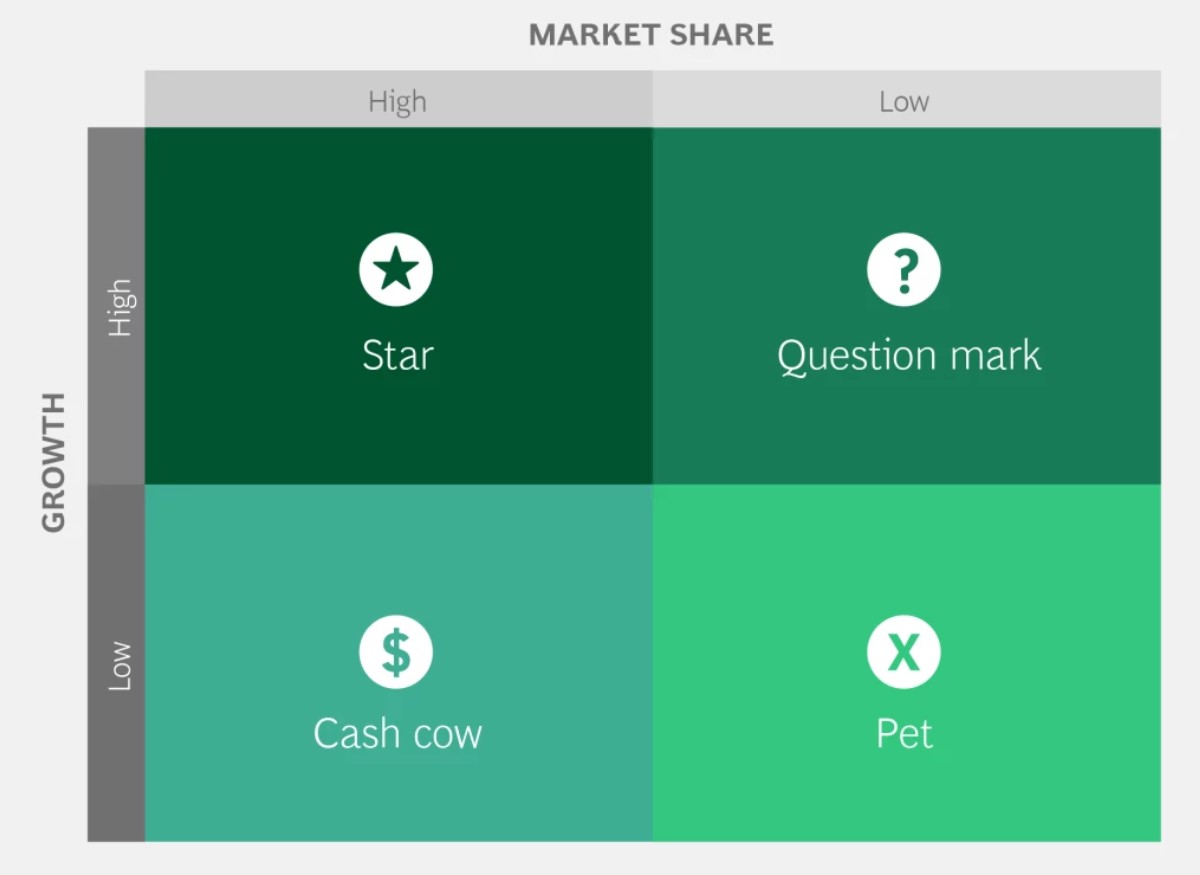
2. Customer Journey Map
A customer journey map helps you understand how your customers interact with your brand across different touchpoints and stages. This way, you know exactly how to improve your customer experience and at what stage.
Read Small Business Reputation 101: Tips and Tools for Success
Think of it as a visual representation of your customer’s journey—from the first contact to post-sales support.
The customer map also opens a window to see how your competitors interact with their customers and where they excel or flop. This gives you insight into how you can improve your services and customer relations.
To create a customer journey map, you should:
- Define your customer persona and their goals, needs, and pain points.
- Identify the stages of your customer journey, from brand awareness to loyalty.
- Map out your customers’ touch points and channels at each stage.
- Evaluate the customer experience and satisfaction at each touchpoint and channel.
- Identify the gaps and opportunities for improvement.
Here’s a look at a customer journey map template by Xtensio:
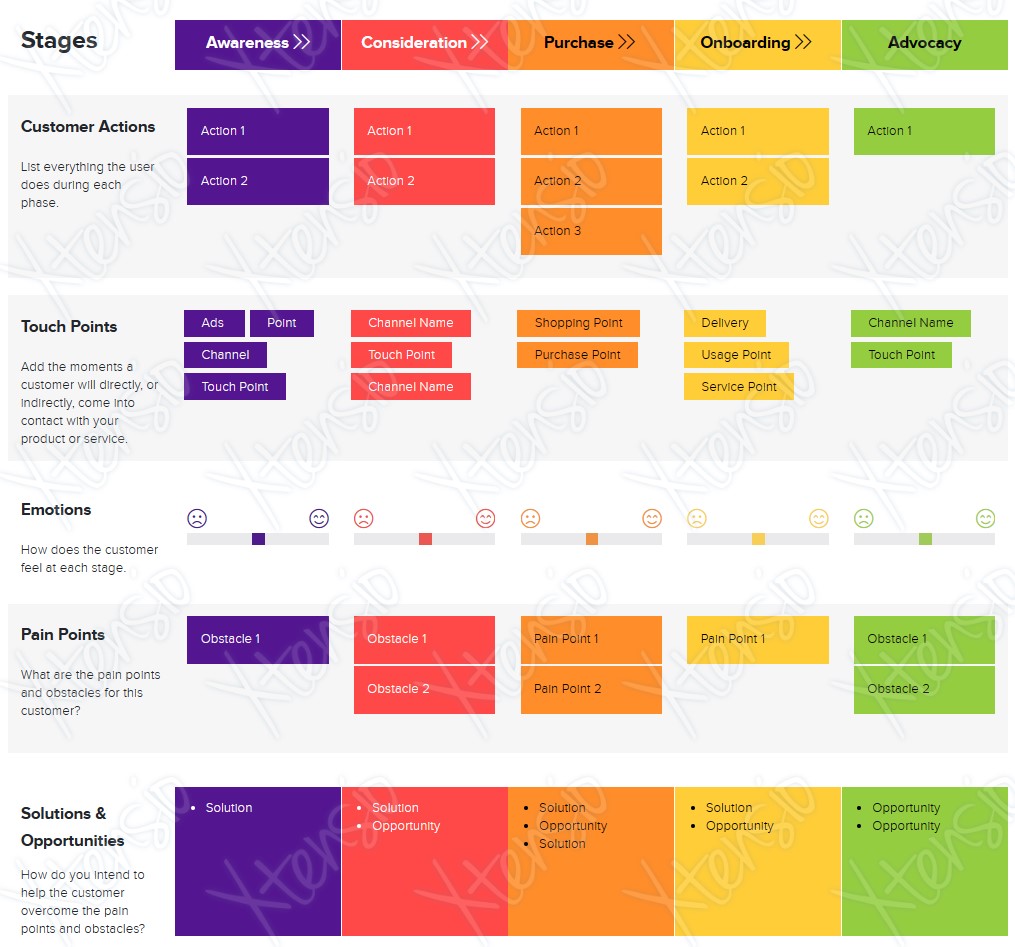
3. Blue Ocean Strategy
The blue ocean strategy is an oddball competitor analysis framework. It is one of our favorites because it forces you to think outside the box.
Instead of focusing on the competition, this framework takes your business out of the fray and sets you on a unique path.
What do we mean by this?
When used properly, the blue ocean strategy can carve out a completely new market where competition is minimal or nonexistent.
Read How to Conduct a B2B Competitive Analysis
To get started, compare your business’s value curve with your competitors’. A value curve shows how your product or service delivers value to your customers based on certain factors of competition in your industry.
Here are the steps involved in the blue ocean strategy:
- Identify and highlight the critical factors of competition in your industry, such as price, quality, performance, and convenience.
- Analyze your competitors’ value curves and determine the critical factors and metrics.
- Identify uncharted factors or services.
- Plot a new value curve that differentiates your business from the competition.
And voila! You’ve discovered a potential blue ocean for your business.
This Conceptboard sample highlights a well-plotted blue ocean strategy template:
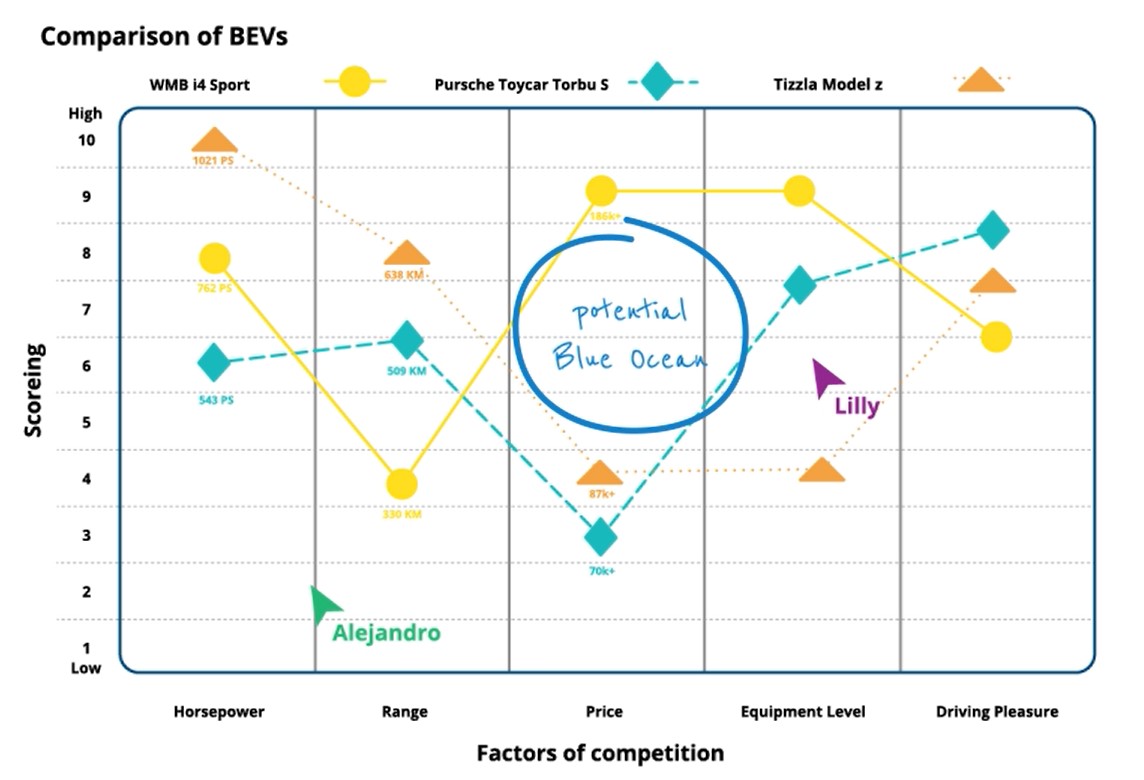
You can also use blue ocean strategy template providers like Miro and Cascade.
4. Social Media Competitive Analysis
This free competitor analysis template for small businesses measures your social media performance against that of your competitors. This way, you can identify where your strengths and weaknesses are and what opportunities you can pursue on social media.
To conduct social media competitive analysis effectively, use the right tools and methods to collect and analyze the data. According to Attrock, a good social media analytics tool can help you unearth a wealth of information that has remained hidden behind your social media efforts.
You can also use tools for social media management, such as Hootsuite, BuzzSumo, and Sprout Social, to lighten your competitive analysis workload.
Take a look at a sample of Sprout Social’s competitive analytics:
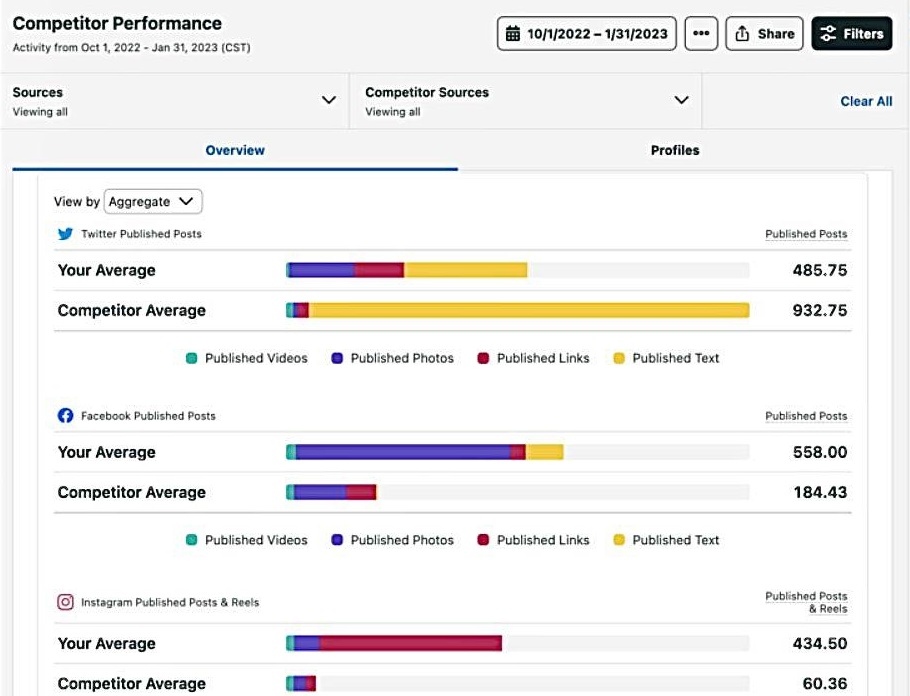
5. SWOT Analysis
Our list of free competitor analysis templates for small businesses wouldn’t be complete without SWOT analysis.
This competitor analysis framework can help your small business identify its strengths, weaknesses, opportunities, and threats. SWOT analysis assesses how these factors can impact present initiatives or future goals.
For example, Freshdesk is good customer service software that increases their tool effectiveness on the basis of regular research. Freshdesk competitors are also good options for the businesses to serve their customers. These also conduct SWOT competitor analysis to understand how they can compete against Freshdesk.
Conducting a SWOT analysis is straightforward. You must:
- Begin by listing the internal and external factors that affect your business, using the SWOT elements (strengths, weaknesses, opportunities, and threats) as a guide.
- Once that’s sorted out, organize the factors into a 2×2 table based on their positive or negative impact.
- Then, analyze the implications of each factor and develop strategies to leverage your strengths, overcome your weaknesses, exploit your opportunities, and neutralize or avoid your threats.
HubSpot gives a great example of a restaurant’s SWOT analysis:
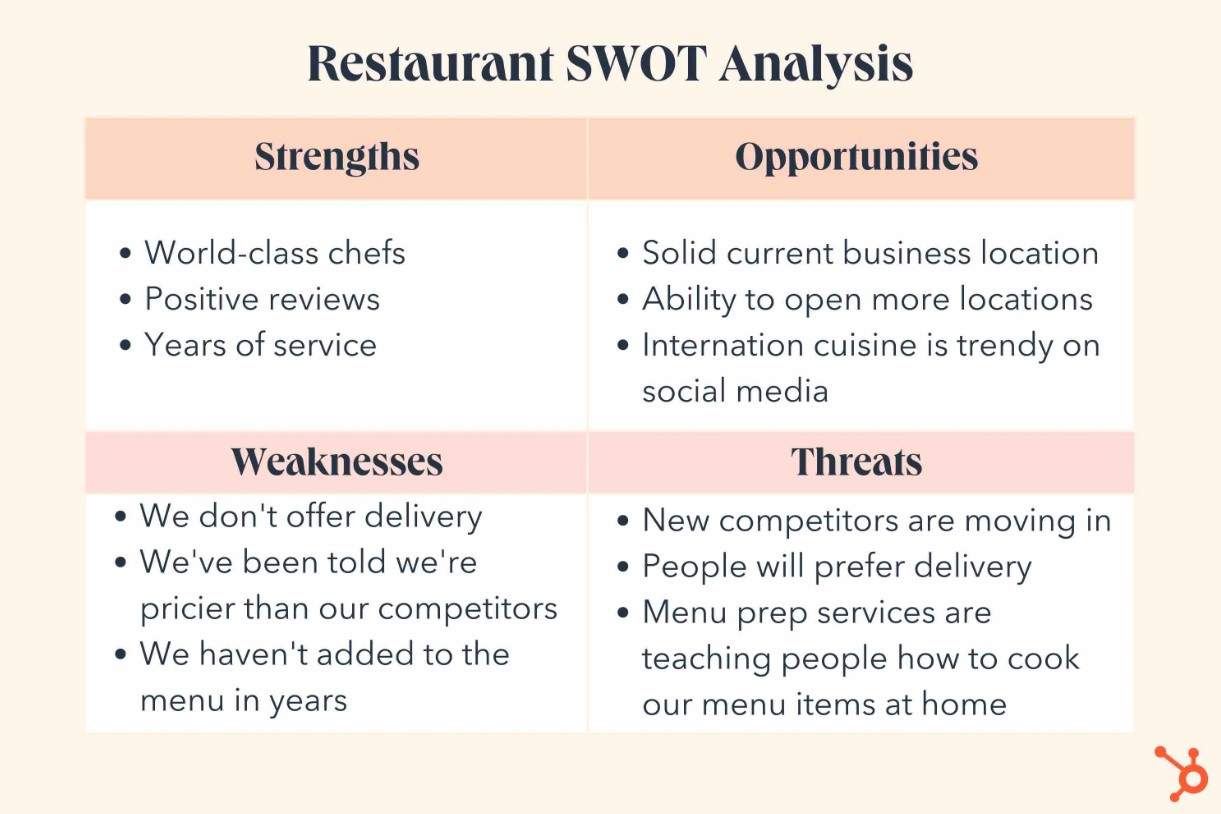
Bear in mind that this free competitor analysis template is not just for analyzing your business and discovering your competitive edge. It can also be used to assess your competitor’s strategy and prospects.
6. 7Ps Marketing Model
The 7Ps is a free competitor analysis template for small businesses that refers to the seven elements of the marketing mix.
The 7Ps are:
- People:
- Who are those responsible for marketing activities?
- What are recruitment and training like?
- Do they have good customer service?
- Physical evidence:
- Brand awareness and recognition
- Product packaging
- Contact experience
- Place:
- Workplace culture
- Trade channels
- Sales support
- Price:
- Pricing strategy
- Costs
- Discounts
- Process:
- Research and development
- Logistics
- Self-service options
- Product:
- Quality
- Branding
- Features
- Variants
- Warranty
- Availability
- Promotion:
- Does the business have an effective SEO strategy?
- How is branding done?
- Do they implement contactless marketing?
- What PR measures are in place?
Assessing your 7Ps against those of your competitors should highlight what you need to do to get ahead of the curve.
Read 6 Ways to Use AI in Competitive Analysis
Here’s a sample of the 7Ps marketing model template from SmartDraw:
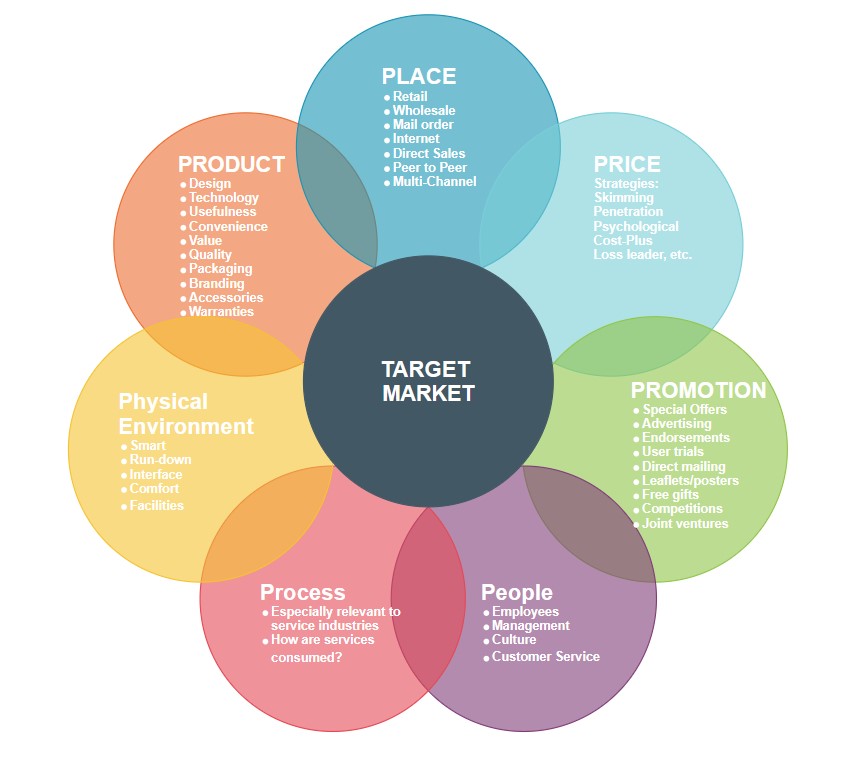
Image via SmartDraw
Benefits of Using a Competitor Analysis Framework for Small Businesses
From what you’ve learned so far, you would agree that competitor analysis frameworks offer significant benefits for small businesses.
Read Competitive Media Reporting Guide for PR and Marketing Professionals
It provides a systematic way of analyzing your competitors and their strategies. At the same time, it helps you gain a deeper understanding of your market, customers, and competitive advantage.
Using a competitor analysis framework can help you:
- Discover your unique value proposition and differentiation.
- Identify the untapped areas, trends, and opportunities in the market and adapt to the needs of the day.
- Learn from the best practices and mistakes of your competitors.
- Develop a more effective marketing and sales strategy to increase customer acquisition and retention.
Conclusion
We’ve shown you 6 free competitor analysis templates for small businesses to help you gain an edge over your competition.
These templates are easy to use, customizable, and actionable. They can help you conduct competitor audits in various aspects, such as:
- Value proposition
- Market positioning
- Industry attractiveness
- Social media performance
With what you’ve learned, we’re sure you can’t wait to explore the frameworks. See what applies to your business to get you an inch closer to your goals.


